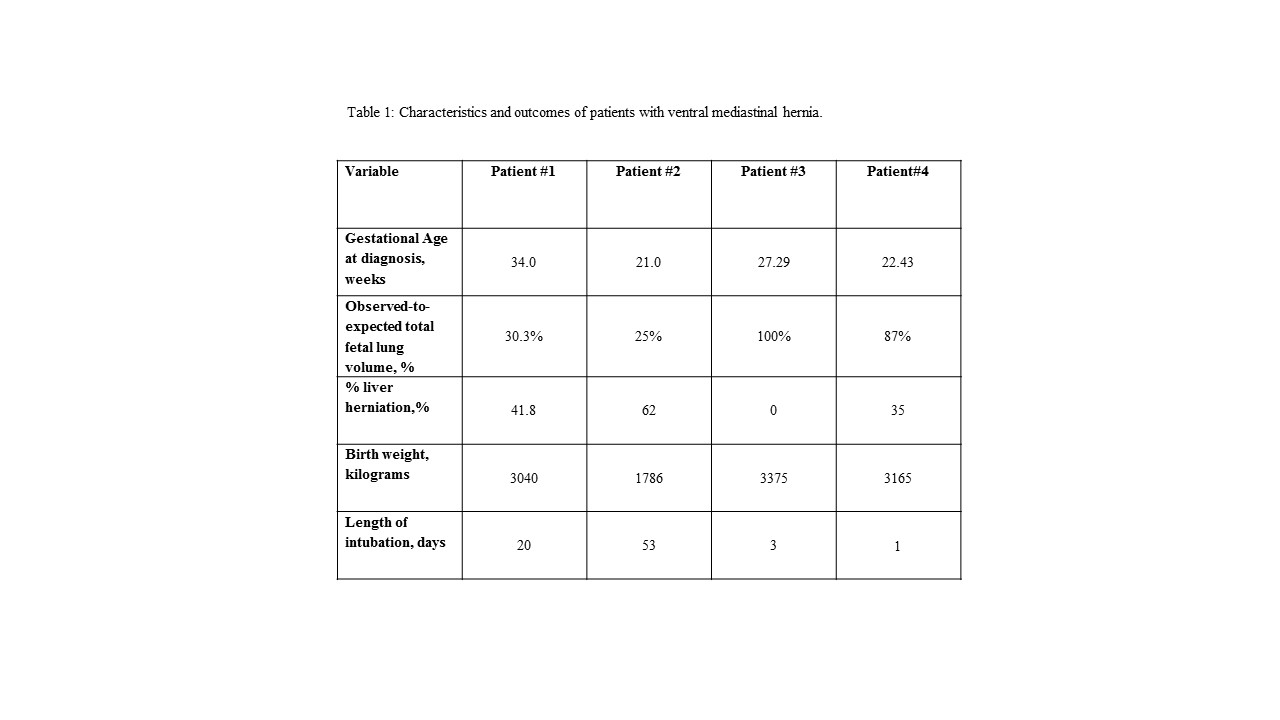S. M. Cruz1,2, A. C. Akinkuotu1,2, D. L. Cass1,2, M. L. Peterson2, T. C. Lee1,2, C. I. Cassady3, A. R. Mehollin-Ray3, R. Ruano4, S. E. Welty5, O. O. Olutoye1,2 1Baylor College Of Medicine,Surgery,Houston, TX, USA 2Texas Children’s Hospital,Pediatric Surgery,Houston, TX, USA 3Texas Children’s Hospital,Radiology,Houston, TX, USA 4Baylor College Of Medicine,Obstetrics And Gynecology,Houston, TX, USA 5Texas Children’s Hospital,Pediatrics-Newborn,Houston, TX, USA
Introduction: Ventral mediastinal hernia (VMH) is a rare variant of congenital diaphragmatic hernia (CDH) that is not well described in current literature. We sought to describe the outcomes of VMH patients managed at a pediatric tertiary care center.
Methods: We reviewed and classified all CDH patients managed at our institution based on the Texas Children’s Fetal Center CDH classification system from January 2004-July 2014. VMH was defined as a defect secondary to incomplete formation of the secundum transversum but without the presence of omphalocele or bifid sternum to suggest a variant of Pentalogy of Cantrell. Hernia locations were confirmed based on operative and autopsy findings. Patient characteristics, prenatal imaging and outcomes were evaluated.
Results:Of 205 patients evaluated, 4 (2%) were classified as VMH. 3 out of 4 did not have associated anomalies. All patients were diagnosed prenatally. Table 1 illustrates characteristics and outcomes of patients with VMH. Intraoperatively, all patients had liver herniation with colon and small bowel herniation (75%) also present. The presence of a hernia sac was noted in three cases. Survival at 6 months was 75% with the only death occurring in the patient with an associated Tetralogy of Fallot and dysmorphic features.
Conclusion:In this series, we describe the course of four patients with VMH, a rare variant of CDH. Patients with VMH had a fair postnatal course with a 6 month survival rate of 75%. These findings may help guide counseling in the immediate postnatal period for patients with this rare anomaly.
